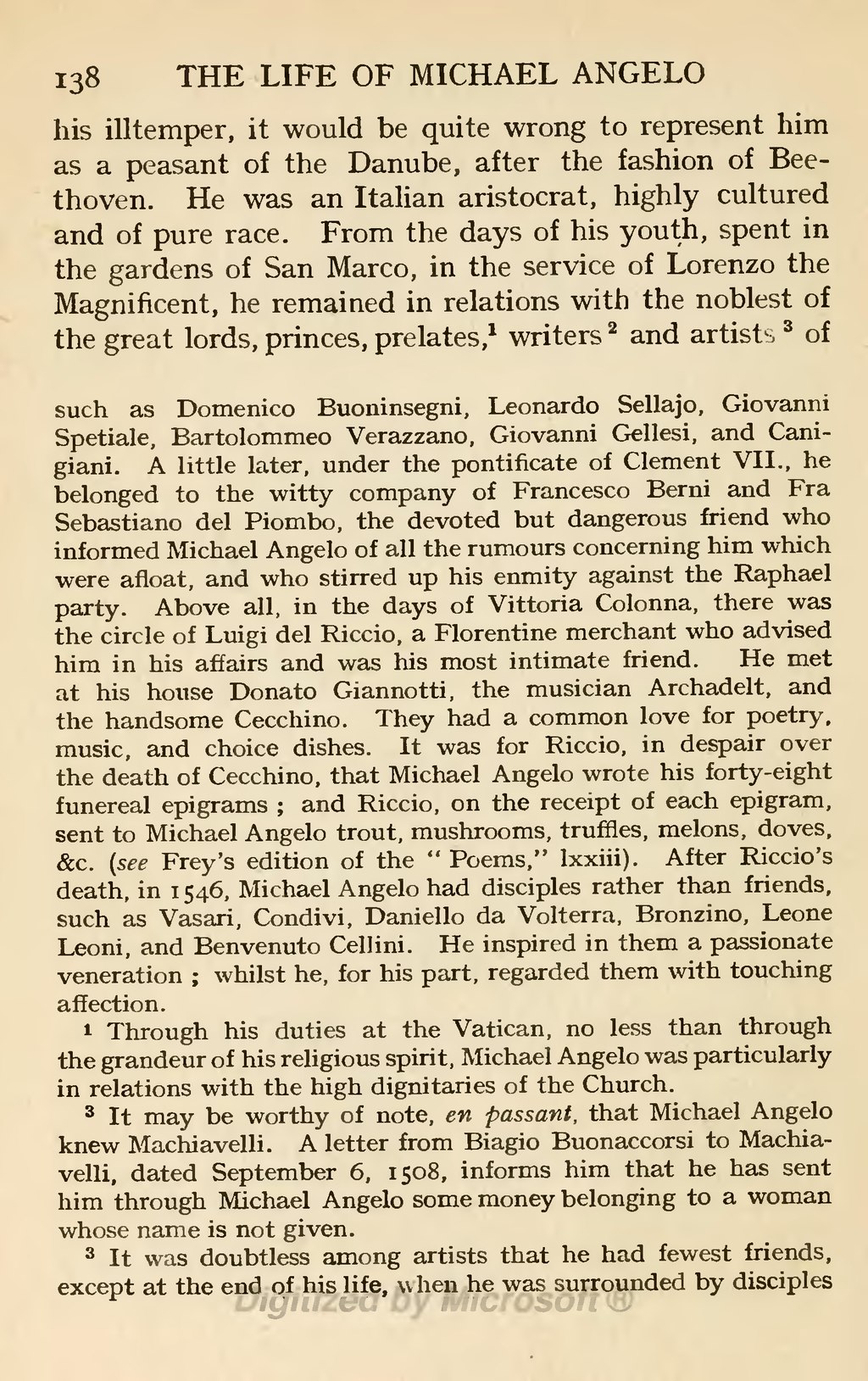his illtemper, it would be quite wrong to represent him as a peasant of the Danube, after the fashion of Beethoven. He was an Italian aristocrat, highly cultured and of pure race. From the days of his youth, spent in the gardens of San Marco, in the service of Lorenzo the Magnificent, he remained in relations with the noblest of the great lords, princes, prelates,[1] writers[2] and artists[3] of
- ↑ Through his duties at the Vatican, no less than through the grandeur of his religious spirit, Michael Angelo was particularly in relations with the high dignitaries of the Church.
- ↑ It may be worthy of note, en passant, that Michael Angelo knew Machiavelli. A letter from Biagio Buonaccorsi to Machiavelli, dated September 6, 1508, informs him that he has sent him through Michael Angelo some money belonging to a woman whose name is not given.
- ↑ It was doubtless among artists that he had fewest friends, except at the end of his life, when he was surrounded by disciples
such as Domenico Buoninsegni, Leonardo Sellajo, Giovanni Spetiale, Bartolommeo Verazzano, Giovanni Gellesi, and Canigiani. A little later, under the pontificate of Clement VII., he belonged to the witty company of Francesco Berni and Fra Sebastiano del Piombo, the devoted but dangerous friend who informed Michael Angelo of all the rumours concerning him which were afloat, and who stirred up his enmity against the Raphael party. Above all, in the days of Vittoria Colonna, there was the circle of Luigi del Riccio, a Florentine merchant who advised him in his affairs and was his most intimate friend. He met at his house Donato Giannotti, the musician Archadelt, and the handsome Cecchino. They had a common love for poetry, music, and choice dishes. It was for Riccio, in despair over the death of Cecchino, that Michael Angelo wrote his forty-eight funereal epigrams; and Riccio, on the receipt of each epigram, sent to Michael Angelo trout, mushrooms, truffles, melons, doves, &c. (see Frey's edition of the "Poems," lxxiii). After Riccio's death, in 1546, Michael Angelo had disciples rather than friends, such as Vasari, Condivi, Daniello da Volterra, Bronzino, Leone Leoni, and Benvenuto Cellini. He inspired in them a passionate veneration; whilst he, for his part, regarded them with touching affection.
